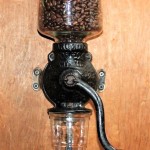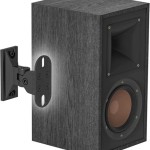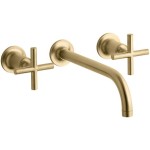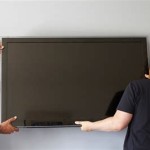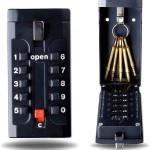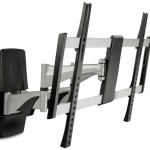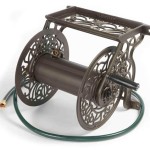Choosing the Right 20-Inch TV Wall Mount
Selecting a 20-inch TV wall mount requires careful consideration of several factors to ensure a secure, functional, and aesthetically pleasing installation. The ideal wall mount should be compatible with the TV's VESA (Video Electronics Standards Association) mounting pattern, capable of supporting the TV's weight, and suited to the intended viewing angle and room layout. Furthermore, understanding the different types of wall mounts available, their features, and limitations is crucial for making an informed decision.
The primary objective is to find a mount that provides a safe and stable platform for the television, preventing accidents and damage. Improper installation or the use of an unsuitable mount can lead to the TV falling, causing injury or damage to the device and surrounding area. Therefore, diligent research and adherence to installation guidelines are paramount.
VESA Compatibility and Weight Capacity
VESA compatibility is the most critical aspect to consider when selecting a TV wall mount. The VESA standard defines the spacing of the mounting holes on the back of the TV. This spacing is measured in millimeters, both horizontally and vertically. For a 20-inch TV, common VESA patterns include 75x75mm and 100x100mm. The television's specifications, which can typically be found in the user manual or on the manufacturer's website, will explicitly state its VESA compatibility.
The chosen wall mount must support the same VESA pattern as the television. Attempting to force a mount with an incompatible VESA pattern can damage the TV and compromise its stability. Some wall mounts are designed to accommodate multiple VESA patterns, offering greater flexibility. These universal mounts often come with adapter plates that can be configured to match the specific VESA pattern of the TV.
In addition to VESA compatibility, the weight capacity of the wall mount is equally important. The mount must be able to safely support the weight of the television. The weight capacity of the mount is typically indicated in the product specifications. It is advisable to choose a mount with a weight capacity that exceeds the weight of the TV to provide an extra margin of safety. Overloading the mount can lead to structural failure and potential accidents.
The weight of the television can also be found in the user manual or on the manufacturer's website. It is crucial to consult these sources to obtain accurate weight information. Do not rely solely on estimates or assumptions, as even small variations in weight can impact the suitability of a wall mount.
Types of TV Wall Mounts: Functionality and Installation
There are several types of TV wall mounts, each offering different levels of functionality and installation complexity. The most common types include fixed mounts, tilting mounts, and full-motion mounts. Each type has its own advantages and disadvantages, making them suitable for different applications and viewing preferences.
Fixed Mounts: Fixed mounts are the simplest and most economical type of wall mount. They hold the TV flush against the wall, providing a clean and minimalist appearance. Fixed mounts are ideal for situations where the viewing angle is optimal and does not require adjustment. However, fixed mounts offer limited flexibility, making it difficult to access the back of the TV for cable management or adjustments.
Installation of fixed mounts is typically straightforward, involving attaching the mount to the wall studs and then securing the TV to the mount. While simple, accurate placement of the mount is critical to ensure the TV is level and properly aligned. Precision in marking the mounting holes and using a level during installation are essential.
Tilting Mounts: Tilting mounts allow the TV to be tilted up or down, improving the viewing angle from different positions in the room. Tilting mounts are particularly useful in bedrooms or other spaces where the TV is mounted higher on the wall. The tilting function can reduce glare and improve viewing comfort.
The installation process for tilting mounts is similar to that of fixed mounts, but with the added consideration of the tilting mechanism. The tilting angle can usually be adjusted after the TV is mounted. Ensuring that the tilting mechanism is properly secured and that the TV is stable when tilted is crucial for safety.
Full-Motion Mounts: Full-motion mounts, also known as articulating mounts, offer the greatest flexibility. They allow the TV to be swiveled, tilted, and extended away from the wall. This allows for a wide range of viewing angles and makes it easy to access the back of the TV for cable management or connecting devices. Full-motion mounts are ideal for rooms with multiple seating areas or where the viewing angle needs to be adjusted frequently.
Installation of full-motion mounts is more complex than that of fixed or tilting mounts. The articulating arm requires careful assembly and attachment to the wall. The wall mount needs to be securely anchored to the wall studs to support the weight of the TV when extended. Precise alignment and secure fastening are essential for ensuring the stability and safety of the installation. It is often advisable to seek professional assistance for the installation of full-motion mounts.
When choosing a wall mount, it is important to consider the specific needs and requirements of the viewing environment. Fixed mounts are suitable for simple installations where the viewing angle is optimal. Tilting mounts offer improved viewing angles in situations where the TV is mounted higher on the wall. Full-motion mounts provide the greatest flexibility and are ideal for rooms with multiple seating areas or where the viewing angle needs to be adjusted frequently.
Installation Considerations and Best Practices
Before installing any TV wall mount, it is essential to identify the wall studs. Wall studs are the vertical framing members that provide structural support for the wall. Attaching the wall mount to the wall studs is crucial for ensuring a secure and stable installation. Using a stud finder can help locate the wall studs precisely.
If the wall is made of drywall, it is generally not strong enough to support the weight of the TV and wall mount. In such cases, it is essential to use appropriate anchors to secure the mount to the wall studs. Toggle bolts or heavy-duty drywall anchors can provide additional support. However, it is always preferable to attach the mount directly to the wall studs whenever possible.
For concrete or brick walls, specialized anchors are required. Concrete anchors or expansion bolts are designed to provide a secure hold in these materials. It is important to use the correct type of anchor and to follow the manufacturer's instructions carefully. Drilling into concrete or brick requires specialized tools and techniques, and it may be advisable to seek professional assistance.
Cable management is another important consideration during installation. Plan the routing of cables to minimize clutter and ensure a clean and organized appearance. Use cable ties or cable sleeves to bundle the cables together and keep them neatly organized. Consider using a cable concealer to hide the cables behind the wall for a more seamless look.
Before completing the installation, double-check that all screws and bolts are tightened securely. Use a level to ensure that the TV is level and properly aligned. Test the tilt or swivel functions of the mount to ensure that they are working smoothly and that the TV is stable in all positions.
Consult the manufacturer's instructions for specific installation guidelines and safety precautions. Different wall mounts may have different installation requirements, and it is important to follow the instructions carefully to ensure a safe and successful installation. If you are unsure about any aspect of the installation process, it is always best to seek professional assistance.
Choosing the right 20-inch TV wall mount involves careful consideration of VESA compatibility, weight capacity, and the type of mount that best suits the viewing environment. Proper installation is crucial for ensuring a safe, secure, and aesthetically pleasing result. By following these guidelines and best practices, one can confidently select and install a wall mount that provides years of reliable performance.

Sanus Medium Full Motion Tv Wall Mount 20 Inch Ext Univ Vmf620 B1

Dual Monitor Wall Mount With 20 Inch Extension Height Adjustable

Sanus Vmf720 S2 Steel Slim Full Motion Wall Mount Bracket 32 55

Full Motion Corner Tv Wall Mount It

Full Motion Corner Tv Wall Mount It

Secu Swing Arm Long Extension Swivel Tilt Tv Wall Mount Bracket For Philips Sansui Dell Proscan Monitor Lcd Led Hdtv Flat Panel Screen M08

Sanus Medium Full Motion Tv Wall Mount 20 Inch Ext Univ Vmf620 B1

Full Motion Corner Tv Wall Mount It

Sanus Black Full Motion Tv Mount Vmf620 B1

20 Inch Long Tv Mounts At Com

